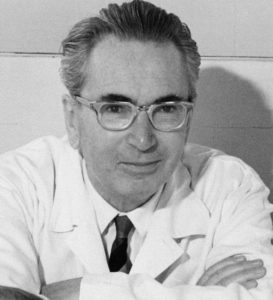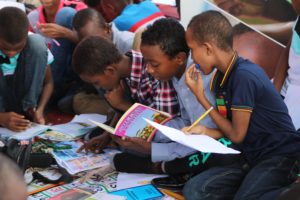Archive for July 2023
Are You Your Own HERO?
Everything can be taken from a man but one thing: the last of the human freedoms—to choose one’s attitude in any given set of circumstances, to choose one’s own way.
-Viktor Frankl
Viktor Frankl, Jewish-Austrian holocaust survivor and psychiatrist, believed that suffering is a part of life, and that man’s ultimate freedom is his ability to choose how to respond to any set of circumstances, even the most painful ones. Frankl founded logotherapy, a school of psychotherapy related to existential and humanistic psychology theories, describing the search for life’s meaning as the central human motivational force. During his 92 years, Frankl published 39 books, the most famous of which, Man’s Search for Meaning (1946), is a best seller. This autobiography is based on his experiences at various Nazi concentration camps. In a 1991 survey conducted for the Library of Congress and the Book of the Month Club, the book was named one of the ten most influential books in the United States. I read it years ago; writing this blog is sparking my interest to read it again.
Choosing one’s attitude…Frankl highlights a very powerful concept. Believing ourselves capable of making our own decisions instead of falling victim to life’s adversities is indeed life changing. Dan Tomasulo, author of Learned Hopefulness: The Power of Positivity to Overcome Depression (2020) and the newly released Positivity Effect (2023), in which he also quotes Frankl, introduced me to the acronym HERO:
“Hope: Choosing to believe you are in control of the future, to act with agency.
Empowerment: Capitalizing on past successes, to build confidence.
Resilience: Cultivating a flexible mindset in the present, to build readiness and courage.
Optimism: Converting how you explain the past and expect the future, to gain perspective and certainty.”
I love this for so many reasons. First, it puts YOU in the driver’s seat of your own life. Second, it touches on all possible time orientations-past, present, and future. Third, it emphasizes the gains you can reap by learning from prior experiences. Fourth, it triggers a future-oriented thought process. Fifth, it inspires positive emotions and states of being including agency, confidence, readiness, courage, perspective, and certainty.
How do you show up for yourself? Can you be your own HERO? Do you choose to believe that you are in control of your future? How do you capitalize on your past successes? Are you able to cultivate a flexible mindset even in the face of adversity? Do you gain perspective and certainty by the way you explain the past and expect the future?
All of this plays into why I love coaching as a profession. You see, I am surrounded by like-minded people. When you see life from the glass is half full perspective, you are inherently hopeful that things can and will go your way. When you believe this, you’re optimistic that you can find success. You are therefore more motivated to try new things and are willing to risk a certain amount of failure because you believe that you’ll learn something beneficial from the experience. Moreover, rather than focusing on one’s past, coaching encourages us to focus on the future.
This is not to say that we will not encounter negativity. Of course we will; we are human. However, resilient people tend to be optimistic and hopeful. With this comes an inherent vision toward future growth. Our daily experiences become a positive cycle or spiral of upward mobility. Empower yourself to become your own personal hero. If this self-empowerment is missing, find people around you who can help lift you up. In time, these repeated practices will become second nature, and your go-to will be to BE YOUR OWN HERO!
Hope plays multiple roles in positive psychology. If this blog has sparked your interest, look for my other blogs about hope: https://www.larahaascoaching.com/hope-it-has-its-own-theory/ and https://www.larahaascoaching.com/joy-is-to-happiness-as-hope-is-to-____/ Or check out Dan Tomasulo or Viktor Frankl’s books mentioned earlier in this post or C.R. Snyder’s Hope Theory.
Rallying Past Successes to Fuel Future Aspirations
Have you ever given much thought to how your past experiences affect your future success? I’ve been thinking a lot about how my multiple careers have built upon one another. It got me thinking, and I’d like to share some of this story with you. Here goes…
When I started teaching nearly 30 years ago, the field of education was quite different from what it is today. Standards-based teaching had not yet taken hold. While teachers may have had a set curriculum, we were free to choose how to teach the material. Alternatively, we may have been piloting an instructional model but had no pre-selected curricular framework. This left a lot of flexibility on the part of the teacher. While there was little consistency between classrooms, it did allow teachers to highlight their strengths and passions, all the while providing room for creativity.
For me, this was incredibly impactful. I knew that kids’ basic biological needs must be met before they’d be ready to learn anything new. If a child hadn’t eaten breakfast before coming to school, I gave them something to eat or sent them to the cafeteria. If they had a rough night, we talked about it, and I allowed them to rest if needed. This also meant building a sense of belonging. Establishing relationships between students and myself, students and other students, and students and staff/students outside of my classroom were a priority. We had regular class meetings so the children could express their concerns to one another. Consequently, students felt safe, included, and engaged not only in the classroom but throughout the school community.
Mine was not a traditional classroom. When you entered, you wouldn’t see rows of desks and kids raising their hands to answer questions. Kids were seated in groups or gathered about the room in pairs or trios, conversing about a problem in front of them or helping one another with a given task. It was a thriving, interactive setting. Rather than sitting (quietly) and getting (listening), the students discussed and learned collaboratively. Brain research and learning theory support the fact that these essential interpersonal, intellectual, emotional, and physical abilities develop through practice and repetition in an active environment.
I held high academic and behavioral expectations for all my students, regardless of their needs, intelligence, or circumstances. Starting wherever they were, I supported and scaffolded just enough to help stretch them to their next level of learning. They had voice and choice in their learning which piqued their interest and motivation. Their diverse strengths were highlighted, and they were encouraged to share these with each other. Students were not afraid to ask questions; in fact critical thinking was at the forefront of every lesson. Students experienced success multiple times everyday. While setting goals toward reaching their personal potential, they had the confidence to challenge themselves and take new risks. They rallied around one another and cheered each other on. Parents admitted that their kids had learned more than they thought possible. Lessons learned included substantial academic growth in multiple subjects in addition to personal and interpersonal concepts like perseverance, inclusivity, and service. All students, regardless of the family’s academic past, including students with special and gifted education needs and English learners, were empowered to learn.
I left teaching once my multiple sclerosis posed too great a strain on my energy to continue teaching the way I was accustomed. It was so difficult for me to leave, and I later told my classmates in my graduate social work program that I wanted to keep within the crossroads of education and social work. More specifically, I hoped to help bring social and emotional learning back into the classroom, as focus on the whole person had dwindled due to competing educational practices.
Following graduation, I was thrilled to get a job writing life, college, and career development curriculum for a nonprofit serving low-income students. It was the perfect venue for me to continue to teach others the value of modeling and teaching holistic wellbeing and the skills/mindsets required to get there. What’s more, Boys Hope Girls Hope has been serving kids through a positive youth development framework for decades. While researching motivation, grit, optimism/hope, etc., I learned about social scientists like Martin Seligman and eventually about the science of positive psychology. It gave the approach I had taken to working with young people and their families during my years teaching a name.
Little did I know, positive psychology had already become the focus of research used in the coaching field. I loved mentoring new teachers, supervising bachelors and masters social work students interning with Boys Hope Girls Hope, and training colleagues in new instructional material. These duties, combined with my teaching career, and a desire to embark in yet a different type of work, opened my mind to going into business as a coach myself. The Wholebeing Institute’s certification program taught me a myriad of coaching strategies as well as guiding me to establish my business.
Today, there is a lot of research available about positive psychology coaching. There’s also a growing amount of research about life coaching with youth but relatively little that combines the two. There are several spinoffs however, including positive youth development, positive parenting, positive discipline, positive education, and others, that I am well read on and use to bolster by toolkit. This love of learning, coupled with insights from past work experiences, invigorate me to dig in to coaching young people and therefore support my future professional aspirations.
So, send me your kids. Together we can guide them toward their potential…and their (and your) dreams!
How can you use your past successes to fuel your future aspirations? Take a few minutes to write about one instance and reflect on the power of this exercise. Comment below to let me know what you learned!
Hope: It Has Its Own Theory!
Continuing with effort is easy advice to give but harder to implement. How do I find and maintain the agency to keep going, you may ask? Well, that’s a great question! This is where intrinsic motivation comes is. When I set goals, I am mindful to find a way to incorporate my own interests and hopes into them. I need to feel a sense of buy in for it to have meaning and purpose and therefore to feel that it is worth my time. Likewise, believing that I can instigate change and achieve these goals is the empowerment I need to keep going, especially when I’m experiencing difficulties.
Hope, thought to be one of the most consequential emotions in promoting wellbeing and life satisfaction, has an entire theory based on it. During the 1950s and 60s, hope was thought to be “the perception that one can reach desired goals.” Following much research on helplessness and the assertion that it can be learned, learned optimism/hopefulness has given way to a more comprehensive definition: “Hope is a positive motivational state that is based on an interactively derived sense of successful agency (goal-directed energy) and pathways (planning to meet goals)” (Snyder, Irving, & Anderson, 1991).
According to positive psychologist Charles Richard Snyder, hopeful thinkers are those “who are able to establish clear goals, imagine multiple workable pathways toward those goals, and persevere, even when obstacles get in their way.” Consequently, they tend to achieve more and are holistically healthier than individuals who are less hopeful. Snyder developed the Hope Theory following his longstanding fascination with hope and *forgiveness. He argues that there are three main things that make up hopeful thinking:
- “Goals – Approaching life in a goal-oriented way.
- Pathways – Finding different ways to achieve your goals.
- Agency – Believing that you can instigate change and achieve these goals.”
Let’s pull this apart a bit. If I wish to succeed with a given challenge, I must have specifically stated, attainable, realistic goals with a timeline in mind. It is also helpful if these goals are measurable in some way. I would brainstorm multiple ways to work toward these goals before taking my first action steps. I always try to have backup plans as I know from experience that not all good ideas end productively. Varied pathways give me alternatives in the case that I run into trouble. Trial and error can be frustrating. Many people grow tired of continued failure and may feel depleted or worse yet, defeated. Loopholes are a part of life. If we give up any time things get tough, we’ll struggle to achieve our goals.
What does this look like, you may ask? Well, I try to tap into my strengths. I use my creativity when thinking of multiple approaches to take. I know that if an attempt isn’t successful the way I’m accustomed to tackling it, I need to try something new. This innovation rekindles my own inspiration to persevere. Perseverance is essential to goal achievement. Each time I fail to get the result I’m seeking I reset my mindset. I acknowledge that things aren’t going as planned (or at least hoped). I reflect upon the process thus far, ask what I can do differently (again, percolating creativity), and rekindle my inner strength to dig in and keep going. I can ask myself, what strengths have I used to make similar things work in the past? How can I implement these same strengths now?
This resilience comes from my mindfulness that progress is difficult. It does not come without trial and often challenge. I recognize that I’m doing my best; this is rarely all I can do, however. Giving up is not a solution, so I either continue with my other ideas or I seek out alternative suggestions. I review my resources and look for a different way around the issue. This takes practice and courage. My success comes from not being afraid that things may not go as I wish. If they go differently than I hope, does that mean I’ve failed?
The answer to this question is an adamant ‘NO!’. The reason for this is that I have a growth mindset. You see, I know that I learn at least as much from my failures as I do from my successes. Am I content that my goals have not been met? Not necessarily, but I take what has happened and try to analyze what the learning points are.
What went well? Why did it go well? How can I make use of this strategy for future success?
What did I learn from the process? What did I learn from the endpoint? What can I take from each (or both) and use to change the outcome next time?
What new resources do I have?
I hope and strive to use this new learning to my advantage next time and challenge you to do the same. How do you handle challenges and what strengths can you put to use to help you persist?
If you’d like to learn more about your hope levels, multiple assessments are available. Here are links to two of the most popular, one for youth and the other for adults. Check them out!
Adult Hope Scale: https://form.jotform.com/201672340927454
Children’s Hope Scale: https://form.jotform.com/201672191516452
*C.R. Snyder cared deeply about the concept of forgiveness. To learn more, read my blog: https://www.larahaascoaching.com/forgiveness-act-or-attitude/



